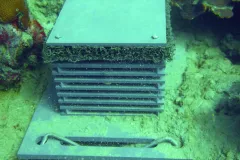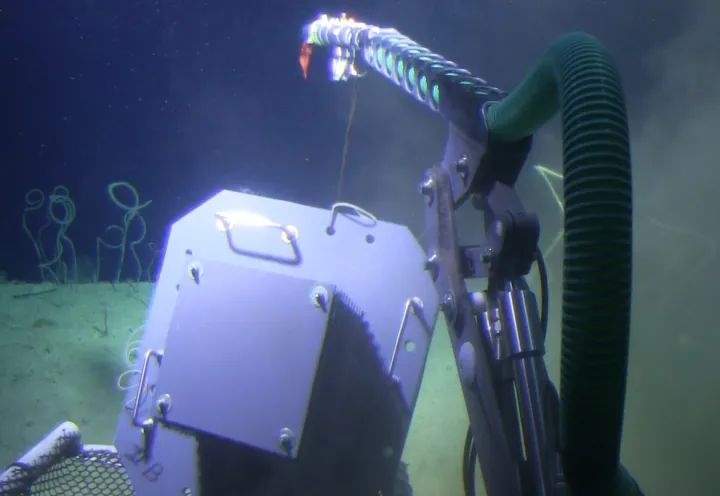Uncovering Biodiversity… with ARMS and a Submarine Claw

If there had been room to stand up, there would have been a standing ovation. As it was, the five of us on the submersible Curasub clapped and cheered when the first three deep-reef ARMS (Autonomous Reef Monitoring Structures) were successfully deployed at approximately 396 feet (120 meters).
ARMS are like condos for a reef’s “hidden biodiversity” -- the small invertebrates and algae that grow, burrow and hide in the cracks and crevices of reefs. In the last few years, more than 500 identical ARMS have been deployed in shallow reefs around the world for a year at a time providing a standard method to quantify and monitor biodiversity of organisms and help monitor impacts of ocean warming and ocean acidification.
But ARMS have never been deployed in deep reefs – until now, that is. Extending ARMS to deep reefs will allow comparison across depth, helping answer questions of what role these deep reefs might play in the survival of shallow reefs.
However, setting out and retrieving ARMS is trickier in the deep, beyond the reach of SCUBA and human hands. Deploying and retrieving them using just a sub’s robotic arms and tools takes creative problem solving and many design iterations.
The overall design of the deep reef ARMS has to remain untouched so that results can be compared with their shallow counterparts. For deep-water deployment, each ARMS has to be attached to the sub in a way that the robotic arm can easily lift it off the sub. With a hook, some string, a pruner-like attachment and a claw, each structure was removed and positioned successfully.
However, the hardest part of placing ARMS in the deep with a submersible is retrieving them after a year. To pull ARMS up, a lined crate is placed over each unit, with the base then acting as a lid so no organisms escape while the structure is brought to the surface.
This is tricky enough when done by a SCUBA diver. How will a sub do this? Stainless steel brackets were attached to the base of each deep-reef ARMS, and a compressible edge and push latches to the rim of each crate. In a year, the sub’s hydraulic arm will place the lined crates over the ARMS and push down. If all goes as planned, there will be two clicks each as the latches lock onto the base plates, and the deep reef ARMS will be ready to be hooked and brought to the surface.
Then the ID and comparison fun will begin!
Editor's note: Learn about why Trish is on a submarine in Curaçao, and more about the Deep Reef Observation Project (DROP) and adventures in a sub.


